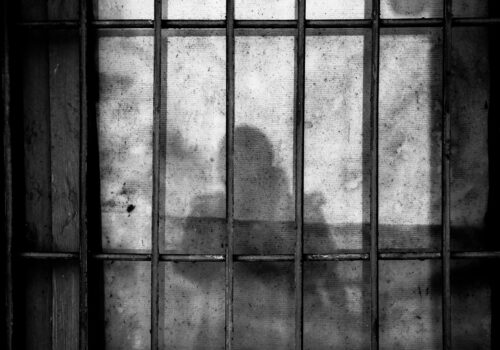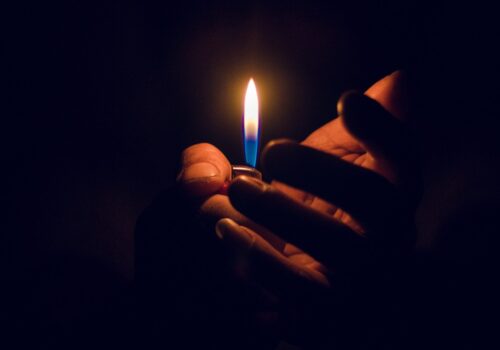Download PDF: Bender, Hallucinations
* Editors’ Note: This essay is part of the Roundtable on Ethnography and Religion.
Are field methods good for every religious studies scholar? Robert Orsi argues that we all need to learn how to do fieldwork in graduate school and return to it regularly. Orsi assigns a much more sophisticated set of goods to ethnographic method than we usually hear. His essay marks a welcome change from the claim that ethnography makes us better, more intuitive or empathic people. He argues rather that the boring, strange, tedious, horrible, and sometimes interesting effects of being in the field has a salutary effect on our intellectual efforts. These experiences inevitably break down our confidence in our theoretical pre-understandings. Fieldwork unsettles what we think we know and dislodges the habituated catechisms of a priori theory. This dislodging makes us better scholars.
I believe that I have made similar arguments myself. But, I’ve also read enough mediocre ethnography to know that being in the field offers no sure cure for theoretical ossification. The methods involved in fieldwork are terribly challenging to do well—and to teach well. So I worry that holding up this (or any other) method as the special tonic for our undisputed intellectual problems may not have the intended consequence. Assigning ethnography this particular role may make it difficult to press the bigger issue at stake: how might we marshal the various disciplinary techniques and methods taught in religious studies to engender their own practices of “dislodging” or otherwise engaging the scholar’s “whole body”?
On the first point, I emphatically agree with Orsi that ethnography can and should be an activity that helps scholars to identify their own intellectual limits and pushes them to new scholarly insights. In my experience, doing ethnography is almost always about these discomfiting and uncomfortable experiences. Yet, I also doubt that it is only the ethnographer who can have encounters of this kind—just as I doubt that ethnography has this effect on everyone (after all, there are all of those mediocre ethnographies out there). I am thinking of colleagues who, while not ethnographers, certainly use their whole bodies when they are reading medieval texts, handling or observing antique relics, or traveling to archives near and far. I am not an historian, but I know that it is not only the ethnographer who encounters books in libraries as serious and profound agents who are likely to speak to and unsettle a scholar. On the several occasions I have spent time in the archives, I have once or twice experienced profound disorientation, deep emotion, tingling awareness. I don’t mean to be mystical. I am speaking about the fact that being there with those older tomes was powerful and presented moments when I really profoundly felt a lack of control over what I was going to hear or read next (a feeling that ethnographers often feel, too). They took me places I had not expected and offered cajoling rejoinders to questions that I had not quite explicitly posed.
Would we call this sort of archival or textual experience a “whole body” encounter? Does such a sensitivity or encounter require ethnographic training or only happen with living people? It may well be that the growing use of ethnography in religious studies allows us to pose these questions, but I don’t think one needs to be an ethnographer to have an encounter with different kinds of unsettling voices or, perhaps, unsettling silences. Religious studies scholars (historians, ethnographers, literary scholars, philosophers) work with all kinds of voices, living and dead, textual and imagistic, ideal and material. I would be hard pressed to argue that these various agents do not have the kind of power in scholarly work that “living, breathing” humans do. The question that a recent “turn” to ethnography may pose, then, is how such varied encounters are articulated, developed, cultivated, used (or, sometimes, ignored, tamped down, shunted into the preface, etc.) in various disciplinary projects. Does every method have its way to unsettle its scholars’ a priori theorizing? When and in what contexts do the methodological possibilities of unsettling come to be prized or valorized, and when are they muted of forgotten? Maybe what Orsi is pointing to can be put more broadly: the virtuoso scholars in any discipline are those who have the courage or the madness necessary to seize onto the unsettling disarray of an unusual encounter (wherever it may happen) and turn it to their scholarly advantage!
These initial thoughts press me to think a bit more about how ethnographers deal with a variety of encounters while in the field. Indeed, what in fact counts as an encounter? This was a major issue for me during my fieldwork in Cambridge, Massachusetts, forThe New Metaphysicals.1 My own struggles and considerations around this question seem quite far away from Orsi’s fairly straightforward depiction of an ethnographic encounter. While he has argued differently elsewhere, he argues here for the power of embodied, real-life, flesh-and-blood material encounters. More precisely, he argues for the salutary power of “real experience” against the problematic scholarly work that emerges from “theoretical hallucinations.” But what do we do when our interlocutors are making claims for hallucinations that challenge this very distinction? Ethnography, it seems, cannot actually take a stand on the side of real experience if theoretical hallucination is its contrast—this is, at least, what I discovered during my fieldwork, which was rife with stories of experiences, dreams, visions, and things that we might otherwise call “hallucinations.” Taking such a stand a priori about the real and the hallucinatory in this context would have foreclosed the possibility of being “unsettled” and challenged by encounters where claims to senses and perceptions and the presence of figures that are not fully embodied (if embodied at all) are made.
Let’s be clear what hallucination commonly denotes. Technically—and the term does have technical valence in the field of psychology—a hallucination is a perception, while in a conscious state, that has no external material stimulus. A hallucination might mean seeing a person who isn’t there, smelling freshly baked bread when there is none, or hearing a voice when there is no one around. A hallucination is not a dream and it requires a judgment on the part of the person who has it to determine whether the source is “of the self or not of the self.” It is not, technically speaking, a trance state—it’s something that happens as you are walking, doing the dishes, or driving your car. In its usual sense, a hallucination is not a good thing. Orsi uses the term in this negative way, as well, when he argues that we can overcome theoretical hallucinations and their misplaced or spectral stimuli by engaging in real experience—or, we might say, when we put flesh and bones on our ghosts and the (theoretical) voices in our head.
Yet, in our modern age, it is this very distinction between the real and the hallucination that is troubled, insistently, by religious experiences and by other kinds of expressions and languages. Those who have read The New Metaphysicals will know that it is filled to the brim with voices, visions, and traces of touch of things that others cannot see, hear, or feel. These are the very things that animate the worlds of the people I met in Cambridge. I wasn’t going to treat them as mistakes or as hallucinations, of course (although I was quite attentive to the forms of judgment that Cambridge’s metaphysicals employed to make their own distinctions between visions that were real and not real). After all, in religious studies we have the capacity to move beyond flat-footed reduction and to query and challenge the negative connotations that come with “hallucination.” However, it was precisely my desire to “tell the goddam truth” (as Orsi’s interlocutors put it) that really made me think about what kind of truth I could or should convey about a hallucination. The “truth” is not merely that people had hallucinations. The ethnographic question was not about counting or recording these events, but rather in figuring out how operations of truth (or, really, the operations of a life, or of lives—operations of authority, power, and mystery) were working out with them. And I began to ask how I could render other people’s experiences in such a way that conveyed the ways that the truth was also experienced within them.
Let me point to an example, briefly, of what I have called Cathy’s out-of-body during a Reiki training course.2 Cathy’s experience (the event itself) was rather discreet: it happened on an afternoon in a particular town in a particular house and so on. Cathy told me about it first during an interview, but she had alluded to it prior to that in other conversations as well. I had the straight story, so to speak, but as I got to writing, I realized that the experience was better understood as something that had been distributed across a number of field notes, transcripts of interviews, and analytical jottings. Her experience was carried in and transformed by oral practices of narration that looped on themselves, took advantage of information that had been only partially divulged earlier, and otherwise presented and represented a web of story. The truth of that experience (and of the many other experiences, hallucinations, out-of-body experiences, visions, and so on) was likewise distributed; it was not singular, it was not first experienced and then recalled, and it was not Cathy’s alone. It was part of the language of relationships of which Cathy was a part. Part of what made this extraordinary experience “extraordinary” was its work in the social world across a range of distributed interactions. The numerous practices/experiences of the experience confounded the view of life as just one damned thing after the other—the experience mapped other times, other connections, and other notions of causality. How could I write about that?
I had no more interest in depicting Cathy’s out-of-body experience as real than in depicting it as a hallucination. What I actually wanted to convey—to myself and to my readers—was how some Americans’ lives (perhaps all of our lives) make meaning in ways that map them in different kinds of temporality and expression that do not fit easily within the temporal frames of any kind of straightforward narrative. That is, the categories I encountered in the field were not really about this real/theory or experience/hallucination distinction. Cambridge’s metaphysicals’ experiences frequently seemed to override any claim to the view that life was just “one damned thing after another” (experience followed by interpretation). Their stories and their practices operated differently than what the basic norms of causality and cause and effect would suggest. So telling Cathy’s story in a way that was narrative, or linear, diminished in a very basic way how the experiences actually “worked,” how they were meaningful, and what kind of truth they had.
My problem—the unsettling—therefore was as much about the graphy as it was about ethnos. I suppose this shows my naïveté, but the “encounter” I was encountering was with the limits of scholarly languages to offer ways to represent experience and encounters of any kind. What to do?
I almost gave up hope of writing intelligibly about Cathy, but then I started to have theoretical experiences. I sought after them, in fact. My theoretical experiences were not always experiences with theory (though they sometimes were). They were also experiences with literature, with writing, with thinking: most did not take place anywhere outside of my mind—or maybe they did. I went back to the archives without a plan. In all respects, the “stimuli” involved were certainly different from that of embodied presence that ethnography typically claims. I started reading novels, I read weird essays on strange topics (birds, rocks, long-haul truckers), and I spent hours listening to a piece of music by Terence Riley. These experiences have little evident trace in the substance of my book. But theoretical experiences not only prodded me toward some way of writing about real hallucinations, they also carried me into a range of questions about how we might open up our ethnographic views to what “stimuli” might be, and how we might work with them intelligibly and with a clear view of the stakes that render any “stimulus” either real or theoretical, experiential or hallucinatory.
The issue of “stimuli” was one close to the heart of my project, as I was constantly reminded by colleagues and friends who jokingly and not-so-jokingly asked me about the mental health of the metaphysicals I met and talked with in Cambridge.3 “She must have been hallucinating,” my friends stated when they heard Cathy’s story. The statements they made suggested that I must agree. What they expected, I believe, was not so much an agreement about my interlocutors’ mental health as a reassurance that all us scholars still agreed about what counted as a stimulus. Before too long the non-question seemed not only tiresome but also rigged: yes or no was a false choice. I yearned for more literary styles, possibilities, and agreed upon approaches to representation.
Which leads me to say: collectively we have far, far too few ways to articulate the “hard core of experience,” especially of people whose experiences are deemed, by virtue of their non-narrative, fantastical, or imaginary qualities, to be neither real nor experiences. Perhaps we lack courage, perhaps we lack practice, but in “getting it right,” we must train ourselves to pay more attention to the “rightness” of writing. It really doesn’t matter how frequently we enjoin our colleagues to open up our views of what religion is, what experience is, or point to what any number of agents (gods, texts, ghosts, the laboratory experiment) might “say” to us if the very narratives within which we work tell a different story about the stimuli we “really” believe in. We need more—more refined and more imaginatively serious ways of “getting it right.”
How do we get there? This is an open question. But I will suggest, in closing, that it will involve more than being present with living people. At this juncture we also need to think closely about the presences and stimuli that we actually encounter, and in particular we need to speak more about the literary, philosophical, and theoretical modes of experience that have profound effects upon us as scholars and humans. We need to stop thinking about them as hallucinations—just as we must resist thinking that the only alternative to “hallucinations” is “the real.” We need to be able to write in ways that reflect the force and power of our encounters with various stimuli and with various material and immaterial things, ideas, and presences, in serious and scholarly ways. This will, of course, require that we not shy away from listening to, touching, and even embracing all of the bodies that the world presents to us.
Notes
1. Courtney Bender, The New Metaphysicals: Spirituality and the American Religious Imagination (Chicago: University of Chicago Press, 2010).
2. Courtney Bender, “Touching the Transcendent: On the Status of Religious Experience in the Sociological Study of Religion,” in Everyday Religion: Observing Modern Religious Lives, ed. Nancy T. Ammerman, (New York: Oxford University Press, 2007), 201-218.
3. Likewise, I imagine that not a day passes without someone accusing the survivors of sexual abuse by clergy of being under sway of mass hallucinations or mass hysteria. The politics of the real/hallucinatory are not child’s play—as Orsi himself knows so well—all the more reason, I think, to insist that “getting it right” means paying close attention to the limits and politics of scholarly/literary style.






